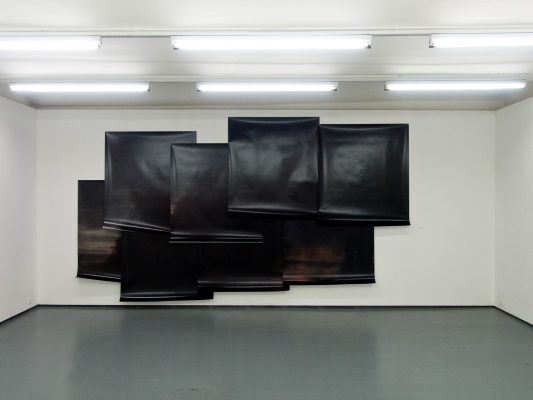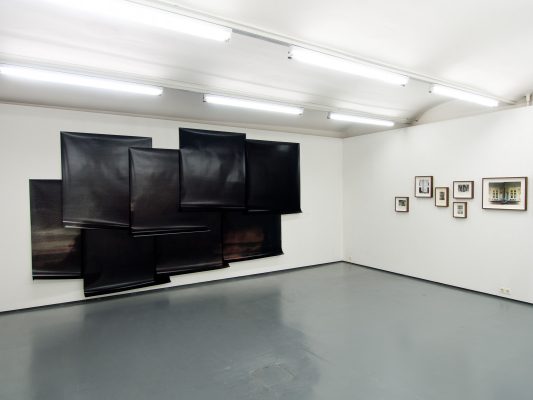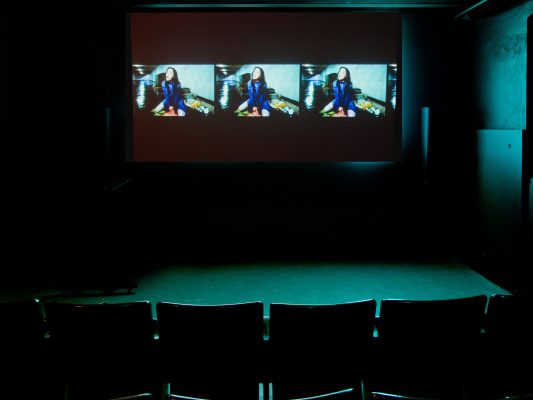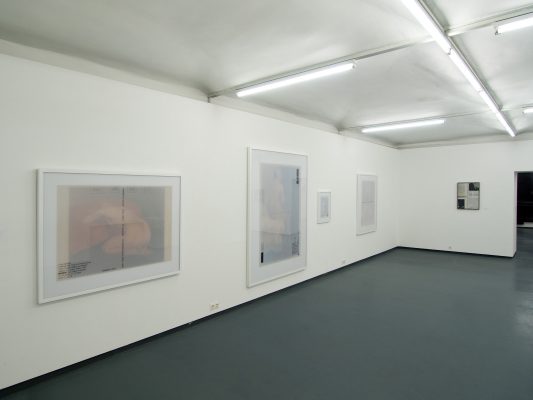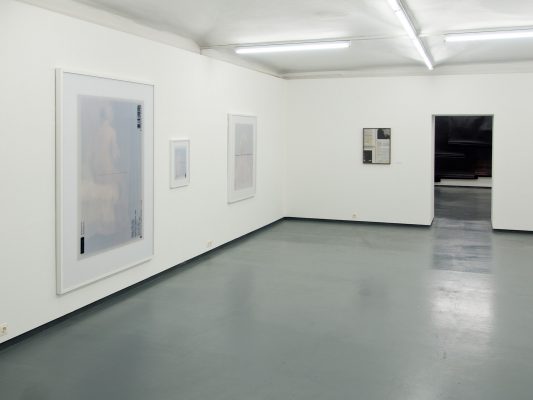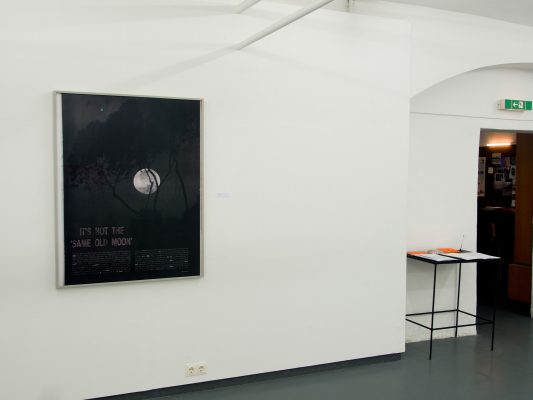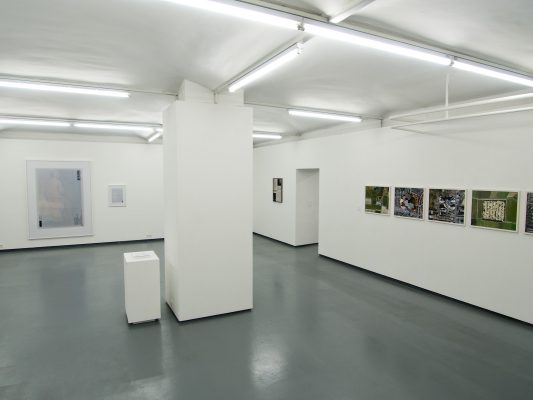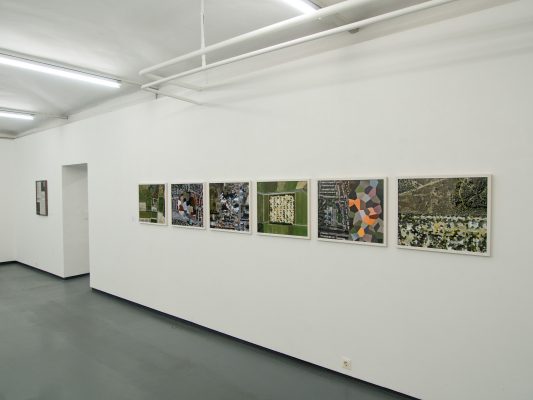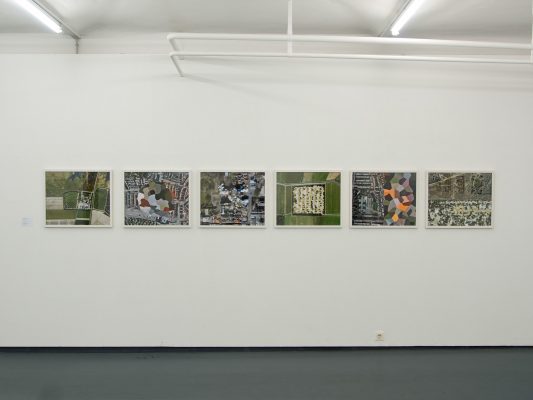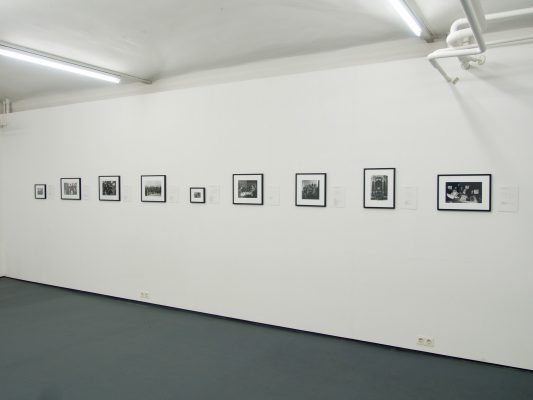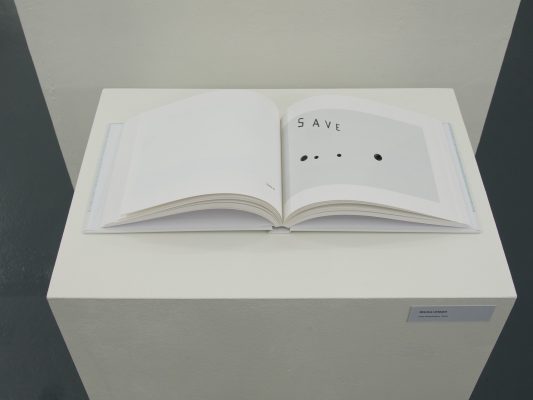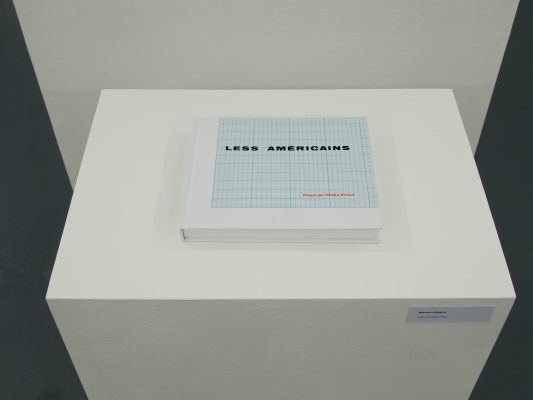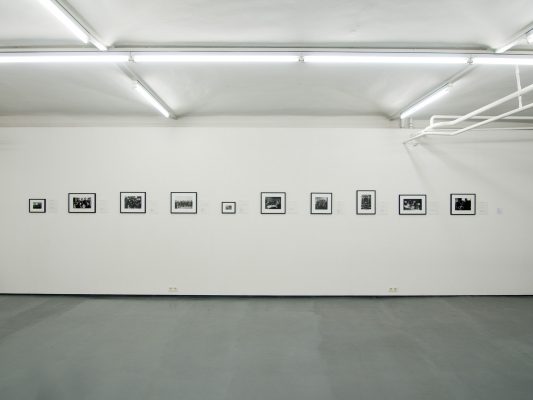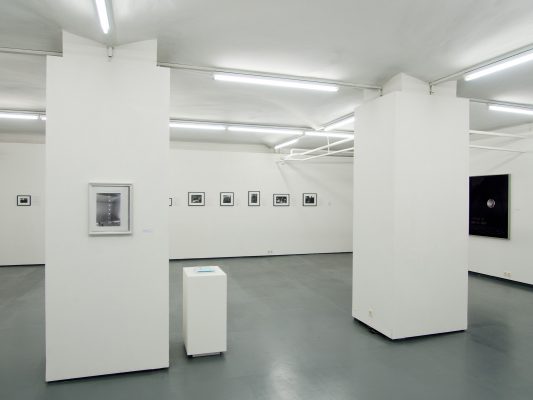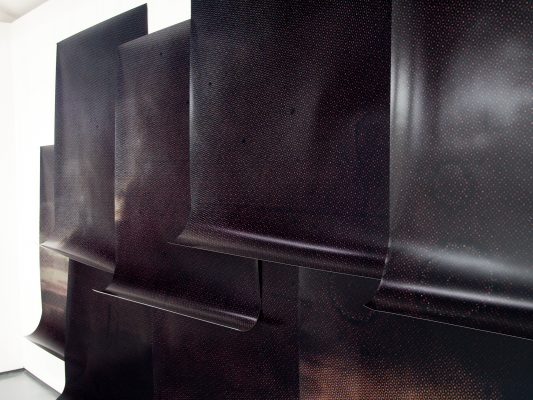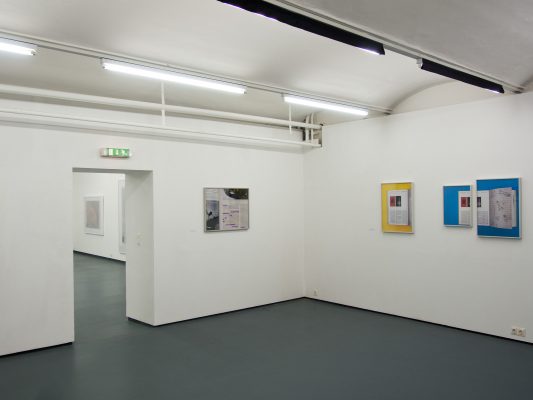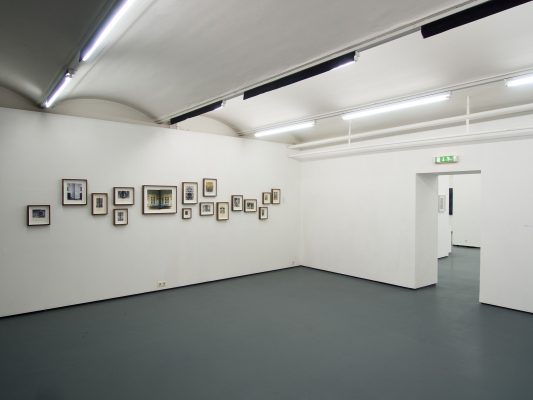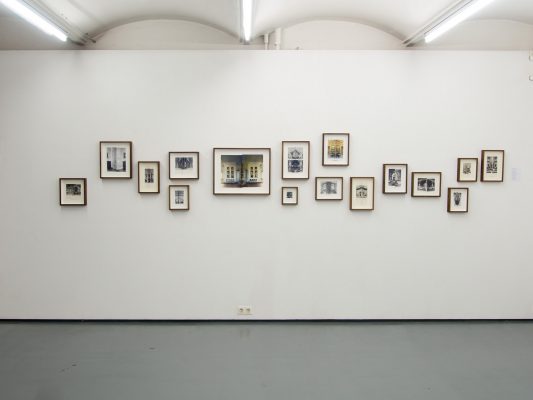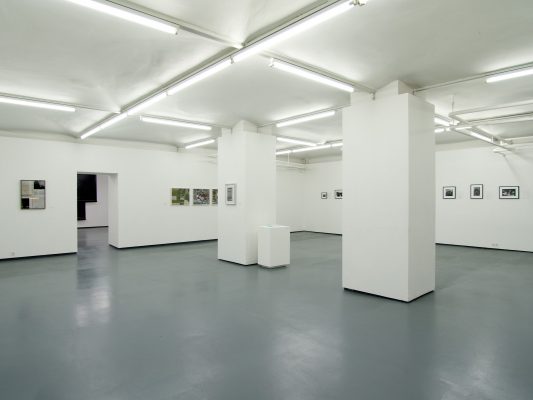Opening: Monday, 14 May at 7 p.m.
Introductory remarks: Petra Noll
Found Footage-Film evening curated by Gabriele Jutz: Thursday, 24 May at 7 p.m.
Partners:
Ruth Horak, Schwadorf
David Hoyland, Galerie SEVENTEEN, London
Gabriele Jutz, Universität für angewandte Kunst, Wien
Gerda Lampalzer, Medienwerkstatt Wien
Claudia Stein, Photography Now, Berlin
Because of the current noticeable affinity towards the use and recontextualization of found material in the work of many artists active in international art discourse the curatorial team of the FOTOGALERIE WIEN, together with art historian and curator Petra Noll, has developed APPROPRIATION as the special focus for this year. The conceptual basis is provided by the Appropriation Art of the 1970s and 1980s in which artists conceptually appropriated pre-existing art works. The tripartite series of exhibitions takes the subject a little further and presents photo and video artists who are involved with found footage material from very different contexts or employ strategies of re-enactment in order to open up new perspectives and pictorial realities. Over and above the central themes of Appropriation Art – authorship and originality – the concern here is with issues of representation and perception, with the politics of social and cultural confrontations as well as with history, memory and identity. In the context of APPROPRIATION the mediums of photography and film which, per se, point in the direction of the past, offer an additional level for reflection.
“What do pictures represent?” is the central question of the first exhibition, QUESTIONING THE IMAGE, with eight international artists who work with found footage material. These found photographic and filmic images are no longer treated as documents of their time but, using visual, textual and audio manipulation are so removed from their origins and changed by recontextualization that their meaning and aesthetic representation is called into question and new meanings made possible. This entails grappling with the authenticity of photographic and filmic images, with reality and fiction as well as with issues of perception and the status of reproductions.
In her large format, analogue colour photographs Claudia Angelmaier examines the relationship of original to copy, picture to text. A collection of art postcards showing female Rückenfiguren (figures from behind) provides the starting point for her series Works on Paper. Angelmaier concentrates on the obverse of the postcards. She photographs and enlarges them in such a way that by shining through the Rückenfigur on the front becomes sketchily visible. The focus of the series is the image caption, i.e. the context of the individual image. Claudia Angelmaier is interested in questions relating to the representation of art, the original and, at the same time, the work is always about probing the limitations of the photographic image.
Anna Artaker is concerned with questioning the representational function of photography as well as examining photography as a historical document. For her work, Unbekannte Avantgarde (Unknown Avantgarde), she appropriated documentary photos of twentieth-century artist groups and subjected them to an examination. The photos show only male artists – exept for one female artist in each photo – a statement which appears believable considering the assumed fidelity of photography. In order to correct this perception Anna Artaker combines the photos, newly enlarged on baryta paper, with drawings that function as captions. They show the outlines of those depicted to which she has attached the names of women artists – an indication that, alongside the official history, other images and texts exist.
Natalie Czech works with found footage text and image material from the print media. In her work she reflects on a subjective process of reading and finding which, without forcing a specific reading, demonstrates the poetic sensations of daily life. The work group Hidden Poems consists of photographs of fragmentarily cited texts and images: In the texts letters and/or words are formally highlighted, either using colour or by deletion in such a way that a poem – written by a poet – disentangles itself from the original, factual text, frequently having a surreal correspondence with the original text or image. The artistic act consists of a recontextualization, putting issues of originality and authenticity up for discussion.
For his series, Dutch Landscapes, Mishka Henner used aerial shots of areas obtained from Google Earth. Because of their strategic importance they have been rendered indecipherable by large scale pixilation. Henner composes his images by selection, creating new landscapes that are almost abstract compositions. He is concerned with the unrestricted availability of images in the web that is taken for granted, with showing and concealing, with the content that the pictures (do not) represent. This also applies to Henner’s book, Less Américains a transformed remake of Robert Frank’s classic photo book, “The Americans”. Here the artist went beyond the selection principle: he digitally deleted a large part of Frank’s pictorial data: “less Americans” – an ironic confrontation with content, form and authorship.
Tatiana Lecomte uses found images in her works such as Auflösung (Dissolutio),, which consists of a number of coloured shots each of which depicts a radically enlarged section of a photograph of the Warsaw Ghetto in flames in 1943. Lecomte reproduced this photo in sections, intentionally avoiding exactness and completeness. Using enlargement, fragmentation, doubling up or omitting subject matter as well as a recontextualization in the form of shifts and overlaps the images lose the unequivocal character of narration. With this rejection of rendering things visible Lecomte calls into question the veracity and informational content of photographic images.
A.D. Martinz used a key scene in the horror film, “Possession”(1981), by Andrzej Zulawski with the actress Isabella Adjani as the starting point for the audiovisual composition The rate of change over time. This nightmare, seemingly irrational scene from Zulawski’s film shows Adjani in an underground pedestrian underpass as she laughs wildly and becomes increasingly insane. Martinz´ interest lies in the interrelationship of image, sound and emotions. By instigating visual and acoustic changes by manipulating time, repetition, superimposition, displacement, out of focus images, amplification etc. the composer and artist has compressed the scene into an overall mood that gets under your skin even more than the original film “Possession”.
Abigail Reynolds works with photographs from second-hand tour guides. The Transposed series shows historical rooms used for ceremonial occasions which, from the architectural point of view, appear to be strangely – even grotesquely – constructed. This is the result of Reynolds’ picture processing: usually she cuts them in the middle of the page, exchanging the two halves. As a matter of principle she neither adds to, nor subtracts from, the pictorial information in the process. Reynolds is concerned with questioning fixed habits of seeing and perceiving. The works engage with the possibilities and optical illusions of the human eye and the limits of the camera’s “eye”.
Julian Tapprich’s video work Coming Soon is based on the trailer for Michael Haneke’s film, “La pianiste (The Piano Teacher)”. Tapprich examines the referentiality of trailers. The trailer to “La pianiste” does not only refer to a story but also contains a self-referential element. In a scene with a Schubert soundtrack the pianist (Isabelle Huppert) announces a letter which arrives immediately and is once again read out to her. Tapprich picks up this closed circuit: the letter is repeatedly announced and continually extended by new literary texts. By mixing the literary texts with those of the trailer the mood and tone of voice of the narrator are in a state of permanent change – a form of disassociation that refers to the abbreviated nature of image, text and sound in trailers.
(textual support: Petra Noll)
